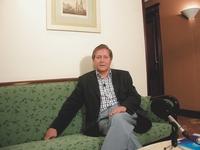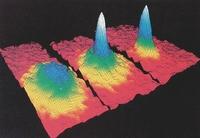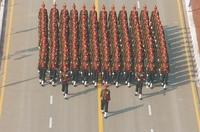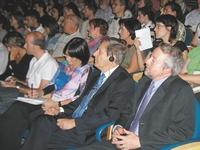Cohen-Tannoudji: “Bosé-Einstein’s condensate is like soldiers parading with heel”

I think the main difficulty of quantum mechanics is that it commands in the microscopic world. Explains the behavior of elementary particles, atoms, electrons... And that behavior and what we see in the macroscopic world, which commands classical intuition, are very different.
However, it is convenient for people to realize that in this world we live in, quantum mechanics is everywhere, in the devices we use every day. CD readers, transistors, computers, internet, etc. All these technological tools are based on quantum effects: transistor effect, stimulated emission, laser light...
Therefore, the difficulty of quantum mechanics is that it contains concepts of physics that we do not see in the classical world, as matter is composed not only of particles but also of waves. It is a difficult concept.
Quantum optics explains how light can be used to transmit information, make very sensitive photodetectors, digital cameras, etc. To explain to someone what I do, I take an example of them and explain how it works.
Also, I think it's important to tell people that physics answers basic questions. How is the universe, if it is expanding, what is the Big Bang, the structure of time, the structure of space... And the only way to answer these basic questions is to do science.
Therefore, science is part of human culture, such as poetry, music or painting. We have to do science, do physics, and explain it to people.

The truth is that we wanted to understand the basic interactions between atoms and light. And when we better understand what happens when an atom is lit by a laser beam, then we begin to think about the basic applications. And we realized that we could use it to dampen (cool) atoms.
That's right: when basic physics is best understood, new ideas appear, options that were previously unthinkable. In this way new applications appear that allow to see new phenomena and new questions arise. It is an endless spiral!
Yes. We use the Kelvin scale and are now a few degrees below the temperature of zero Kelvin (0K). Given that the ambient temperature is 300 K, the lowest temperature we have reached is per billion. By the way, it is the lowest temperature in the universe, since the temperature of interstellar space is 2.7 K if the cosmic radiation of the background is taken into account.
We have achieved temperatures a million times lower. That can only be done in a lab.
No, it is an asymptote. It is a limit, therefore, it makes no sense.
As for the practical limit, in quantum mechanics we have a limit: Heisenberg's uncertainty principle. According to this, position (x) and moment (p) --or velocity - are related: both cannot be measured exactly at the same time. To reach the absolute zero, the atom must stand, so the speed is defined and the position cannot be determined. That is, to put a gas at very low temperatures, more and more box needs to be made.

However, when we do the experiment, the tool has a certain measure, we have the limit of this measure. But there are many options. The temperature of a nanocelvin (10 -9 K) corresponds to a measure of 30 microns, a million meters.
And in the laboratory experiment we have more than 30 microns. Therefore, the principle of uncertainty does not limit us for the moment, but will limit us as we lower the temperature.
At very low temperatures, we also have another effect of quantum mechanics: each particle has a wave. The wavelength of this wave is inversely proportional to the speed. Thus, when an atom cools, as its speed decreases, the wavelength increases. At very low temperatures the particles are waves of great wavelength, and the waves of all atoms unite, overlap.
In this situation they act like water waves: they join or hinder. These quantum interactions constitute Bose-Einstein condensation.
Condensate is a state of matter, formed by atoms found in the same quantum state. Atoms are in the same phase, they have the same speed... as the army of soldiers parading with heel. They have a coherent character. And its surprising characteristics are, for example, superfluidity (the main characteristic of superconductors). In this medium there is no friction, the system is completely fluid. Therefore, it has impressive features.
Yes, it is. The difference between light and laser (the latter is very directional and coherent) and conventional matter and Bose-Einstein condensate. Conventional matter is disordered and all atoms of the condensate Bose-Einstein are in the same state.

Thus, rays with waves of matter, analogous to laser light, can also be made. They are called atomic lasers.
With these waves of matter an optics can be made: lithography, atomic lasers, atomic rometers... there are many possible applications.
I see both activities fully linked. In order to teach a subject, we must analyze it in depth: to teach something we must understand it even more. And this is very useful for research.
On the other hand, teaching without engaging in research can be obsolete in a few years. And it is useless to investigate if you do not transfer it. It is therefore a basically joint action. In France we call enseignant chercheur: professor and researcher at the same time.
Until last year I have been a professor at Còllege de France. Còllege de France is a very special institution in which each teacher teaches a different subject each year. And there are no students, anyone can go, they don’t give titles, you don’t have to enroll… So, only interested people come to the class.
Therefore, I am obliged to teach something new every year. It is a great challenge, but also a stimulus for work. It has helped me a lot, because I have to learn constantly, and that is also a stimulus for research. Therefore I believe that teaching and research are closely linked.
Buletina
Bidali zure helbide elektronikoa eta jaso asteroko buletina zure sarrera-ontzian











